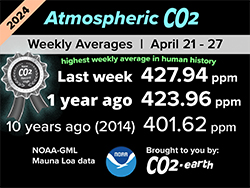RWA
The Integration of Blockchain and NFT in Real World Assets
Welcome to Hoken Tech
The blockchain technology and non-fungible tokens (NFTs) are revolutionizing the way we interact with both the digital and physical worlds.
While cryptocurrencies like Bitcoin and Ethereum have captured the attention of the general public, the tokenization of Real World Assets (RWAs) is gaining ground as one of the most promising applications of blockchain and NFTs.
Understanding Blockchain and NFTs
Blockchain is a decentralized and distributed digital ledger that enables the storage and validation of transactions in a secure, transparent, and immutable manner.
Each block in the chain contains a set of transactions that, once validated and added to the blockchain, cannot be modified or deleted.
This feature makes blockchain an ideal technology for applications requiring a high level of trust, transparency, and security.
NFTs, on the other hand, are unique and non-interchangeable digital tokens created using blockchain technology.
Unlike cryptocurrencies such as Bitcoin and Ethereum, which are fungible and thus interchangeable, each NFT represents a unique digital asset, such as a piece of art, a collectible item, or real estate.
The ownership and authenticity of these assets are recorded and verified on the blockchain, ensuring their uniqueness and preventing duplication or counterfeiting.
The Integration of Blockchain and NFT in Real World Assets
The integration of blockchain and NFT in Real World Assets enables the tokenization of physical assets, such as real estate, artworks, and other valuable objects.
This tokenization is the process of converting the ownership rights of a physical asset into a unique digital token, which can be exchanged, transferred, and traded on blockchain-based platforms.
This process offers several advantages, including:
Fractional ownership: Tokenization allows for the division of a physical asset’s ownership into multiple tokens, facilitating shared ownership and access to investments previously reserved for institutional investors or high-net-worth individuals.
Liquidity: Tokens representing Real World Assets can be traded on digital platforms, increasing the liquidity of traditionally illiquid assets such as real estate and artworks.
Transparency and security: The recording of transactions on the blockchain ensures a high level of transparency and security, reducing the risk of fraud and legal disputes.
Cost reduction: The elimination of intermediaries and the automation of processes through smart contracts can significantly reduce the costs associated with transactions and the management of Real World Assets.
Challenges and Legal Considerations
Despite the promising opportunities offered by the tokenization of Real World Assets, there are still several challenges and legal issues to address:
Regulation: The regulation of Real World Asset tokenization is still in development, and regulatory authorities are struggling to adapt existing laws to this new technology.
Security: Although blockchain is considered a secure technology, there are still risks associated with the custody and management of digital tokens, such as digital wallet thefts and cyber attacks.
Barriers to entry: The mass adoption of Real World Asset tokenization requires greater awareness and understanding of blockchain technology and NFTs, as well as the implementation of adequate infrastructures and services.
The Future of Real World Assets with Blockchain and NFT
The future of Real World Assets with blockchain and NFT is promising, with several predictions and expanding trends:
Expansion into new sectors: As the technology evolves and awareness increases, it is likely that the tokenization of Real World Assets will expand into new sectors, such as energy, agriculture, and healthcare.
Integration with other emerging technologies: Blockchain and NFTs could be integrated with other emerging technologies, such as artificial intelligence and the Internet of Things (IoT), to create new innovative applications and services.
Mass adoption: As challenges and legal issues are addressed and resolved, it is likely that the mass adoption of Real World Asset tokenization will increase, transforming the way we interact with physical and digital assets.
Conclusion
In conclusion, the integration of blockchain and NFT in Real World Assets is revolutionizing the way we interact with physical and digital assets, offering new investment opportunities, liquidity, and transparency.
Despite the challenges and legal issues to be addressed, the future of tokenized Real World Assets is promising, with expansion into new sectors and integration with other emerging technologies.
Preparing for this change means acquiring greater awareness and understanding of blockchain technology and NFTs, as well as being ready to seize the opportunities that this digital revolution offers.
nft, hoken tech, blockchain, cryptoart, eos, nft art, artificial intelligence, ai, watch authentication, crypto artist, nfts, web3, nft game, web3 game, videogame, nft distributor, videogame blockchain







